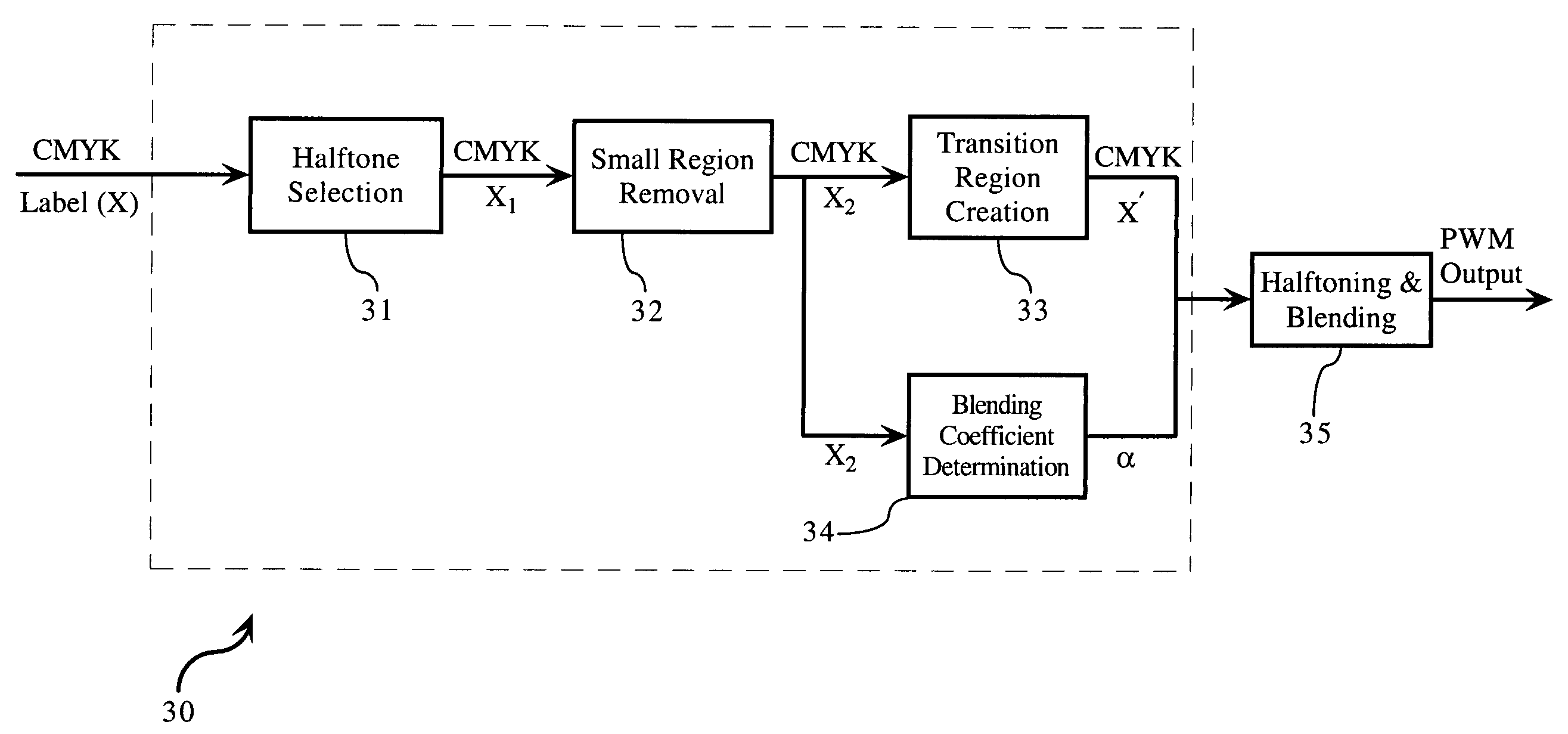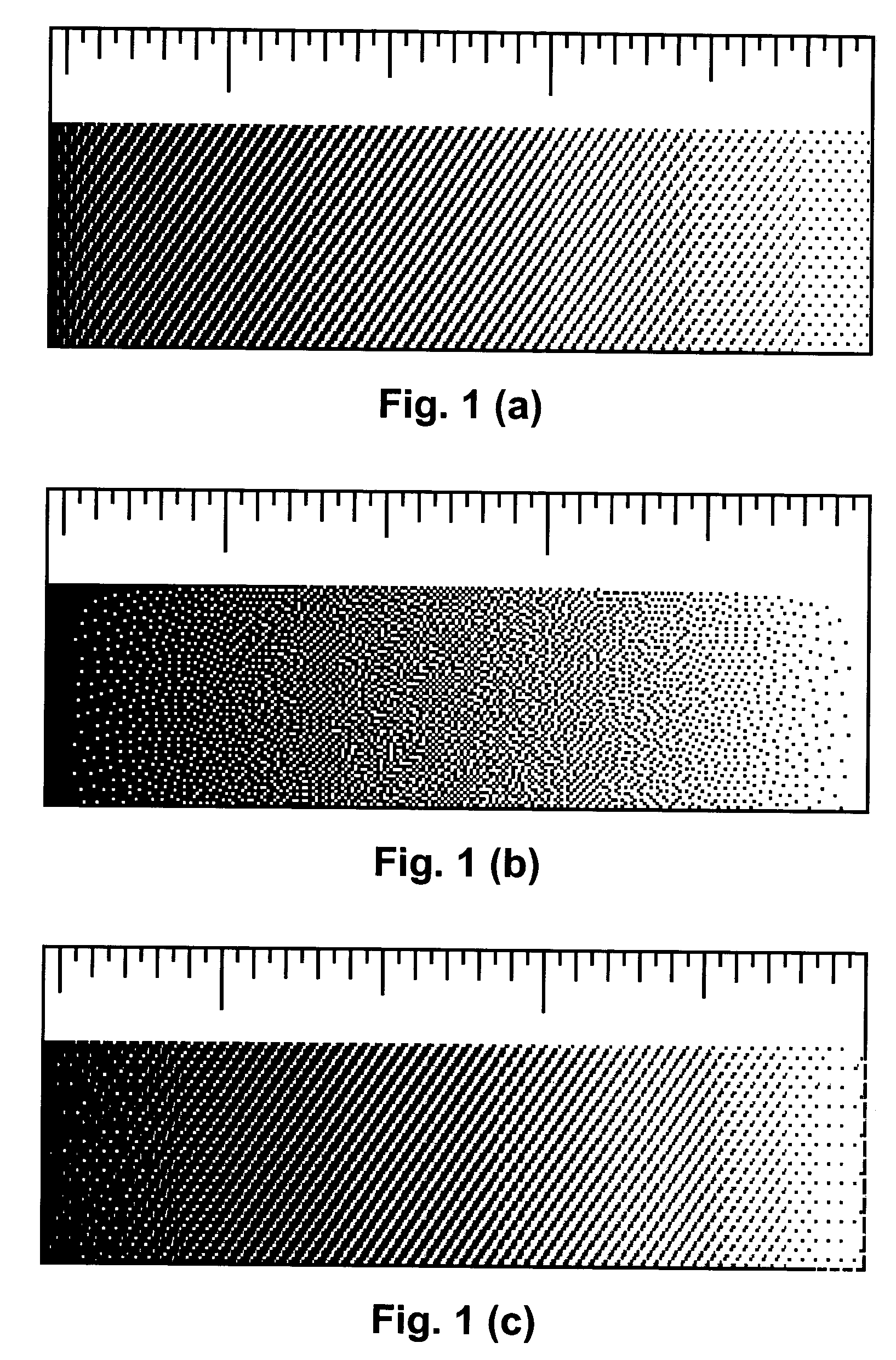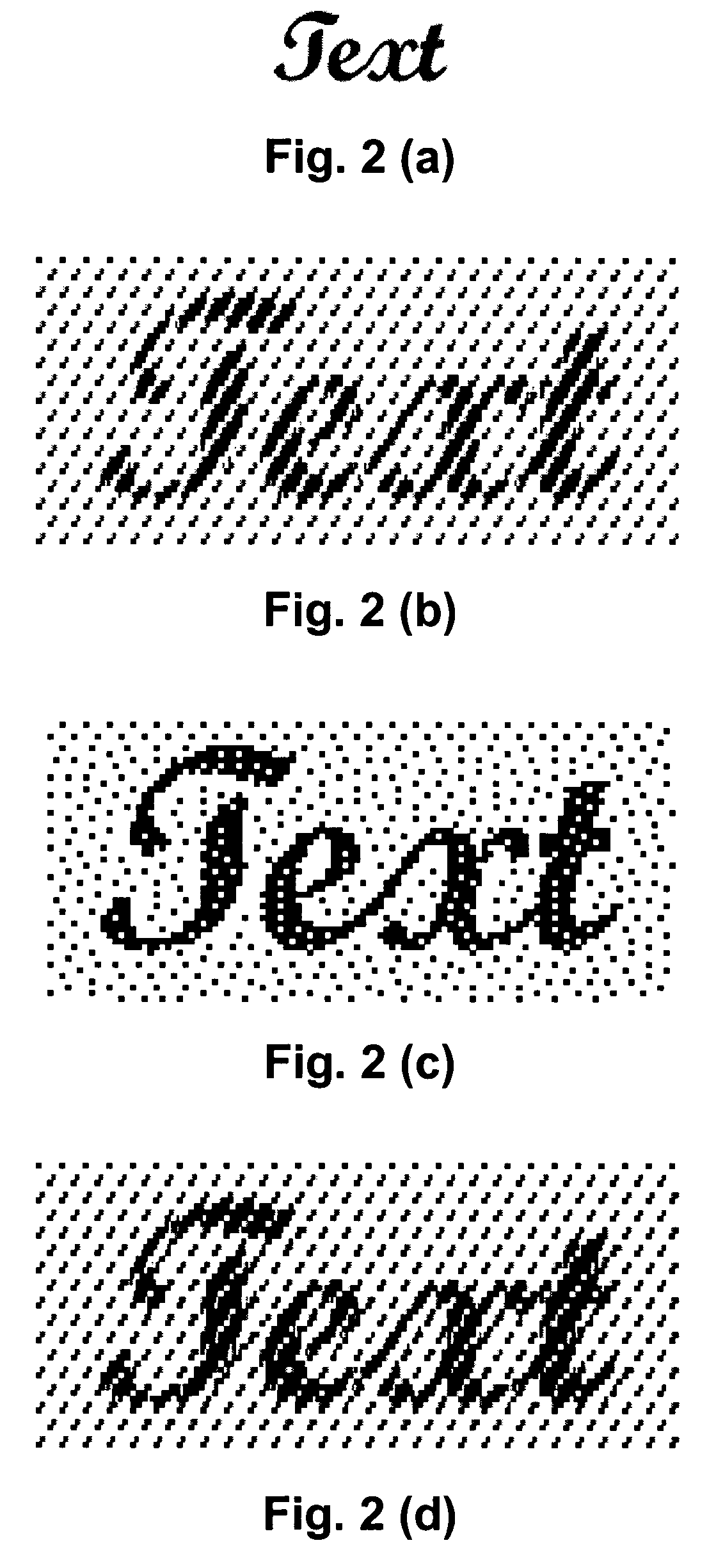Adaptive halftone scheme to preserve image smoothness and sharpness by utilizing X-label
- Summary
- Abstract
- Description
- Claims
- Application Information
AI Technical Summary
Benefits of technology
Problems solved by technology
Method used
Image
Examples
Embodiment Construction
FIGS. 1 (a), (b) and (c) provide a ramp comparison of three halftoning techniques: cluster-dot screening (SCN), error diffusion (ED), and error diffusion with cluster-dot screening (EDSCN). In ED, a single fixed threshold is used, whereas in EDSCN, an ordered dither threshold array or screen is used. Comparing FIGS. 1 (a) and (c), it can be seen that the ramp generated using EDSCN does not differ too significantly from the one generated using SCN. However, some wavy patterns appear in the light-tone region if EDSCN is used. FIG. 2 (a) shows text on a light background, and FIGS. 2 (b)-(d) show pulse width modulated halftone representations of that text image using different halftone techniques: SCN, ED and EDSCN, respectively. As can be seen from the figures, SCN produces jagged text and ED produces sharp text. EDSCN yields a compromise between the two.
Considering these observations, the inventors herein have constructed an adaptive halftone algorithm in which different halftone tec...
PUM
 Login to View More
Login to View More Abstract
Description
Claims
Application Information
 Login to View More
Login to View More - R&D
- Intellectual Property
- Life Sciences
- Materials
- Tech Scout
- Unparalleled Data Quality
- Higher Quality Content
- 60% Fewer Hallucinations
Browse by: Latest US Patents, China's latest patents, Technical Efficacy Thesaurus, Application Domain, Technology Topic, Popular Technical Reports.
© 2025 PatSnap. All rights reserved.Legal|Privacy policy|Modern Slavery Act Transparency Statement|Sitemap|About US| Contact US: help@patsnap.com



